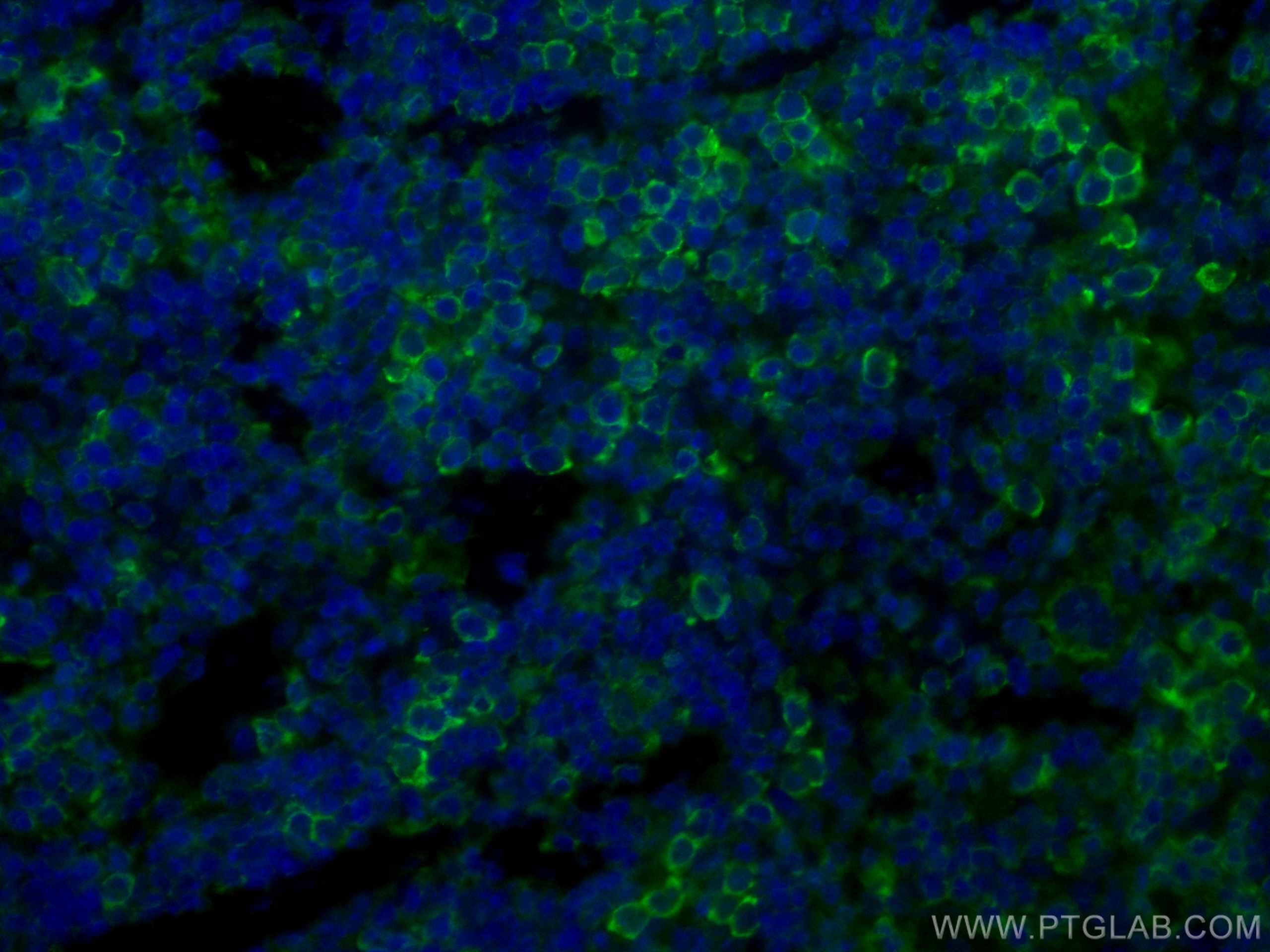Anticorps Monoclonal anti-ICAM4
ICAM4 Monoclonal Antibody for IF-P
Hôte / Isotype
Mouse / IgG1
Réactivité testée
Humain
Applications
IF-P
Conjugaison
CoraLite® Plus 488 Fluorescent Dye
CloneNo.
3A9B9
N° de cat : CL488-67014
Synonymes
Galerie de données de validation
Applications testées
| Résultats positifs en IF-P | tissu splénique humain, |
Dilution recommandée
| Application | Dilution |
|---|---|
| Immunofluorescence (IF)-P | IF-P : 1:500-1:2000 |
| It is recommended that this reagent should be titrated in each testing system to obtain optimal results. | |
| Sample-dependent, check data in validation data gallery | |
Informations sur le produit
CL488-67014 cible ICAM4 dans les applications de IF-P et montre une réactivité avec des échantillons Humain
| Réactivité | Humain |
| Hôte / Isotype | Mouse / IgG1 |
| Clonalité | Monoclonal |
| Type | Anticorps |
| Immunogène | ICAM4 Protéine recombinante Ag27628 |
| Nom complet | intercellular adhesion molecule 4 (Landsteiner-Wiener blood group) |
| Masse moléculaire calculée | 271 aa, 29 kDa |
| Numéro d’acquisition GenBank | BC029364 |
| Symbole du gène | ICAM4 |
| Identification du gène (NCBI) | 3386 |
| Conjugaison | CoraLite® Plus 488 Fluorescent Dye |
| Excitation/Emission maxima wavelengths | 493 nm / 522 nm |
| Forme | Liquide |
| Méthode de purification | Purification par protéine G |
| Tampon de stockage | PBS with 50% glycerol, 0.05% Proclin300, 0.5% BSA |
| Conditions de stockage | Stocker à -20 °C. Éviter toute exposition à la lumière. Stable pendant un an après l'expédition. L'aliquotage n'est pas nécessaire pour le stockage à -20oC Les 20ul contiennent 0,1% de BSA. |
Informations générales
This gene encodes the Landsteiner-Wiener (LW) blood group antigen(s) that belongs to the immunoglobulin (Ig) superfamily, and that shares similarity with the intercellular adhesion molecule (ICAM) protein family. The protein migrate as a 42 kDa glycoprotein on SDS PAGE. Alternative splicing results in multiple transcript variants encoding distinct isoforms.
Protocole
| Product Specific Protocols | |
|---|---|
| IF protocol for CL Plus 488 ICAM4 antibody CL488-67014 | Download protocol |
| Standard Protocols | |
|---|---|
| Click here to view our Standard Protocols |


